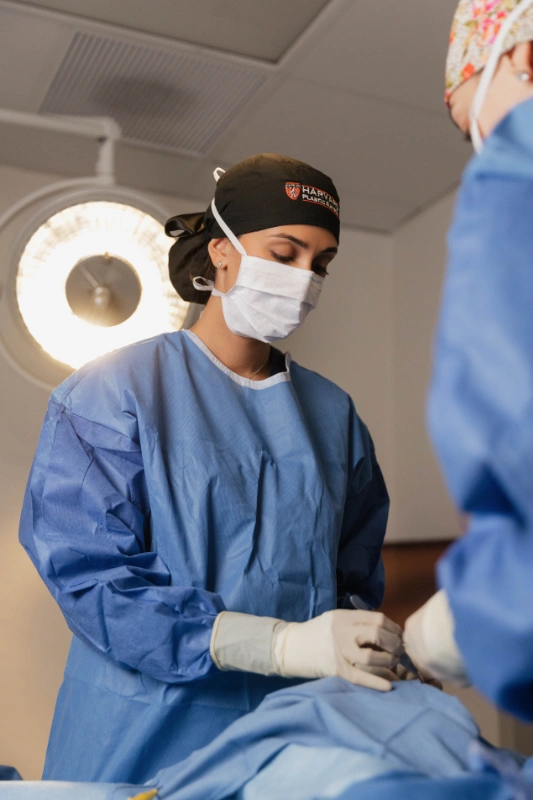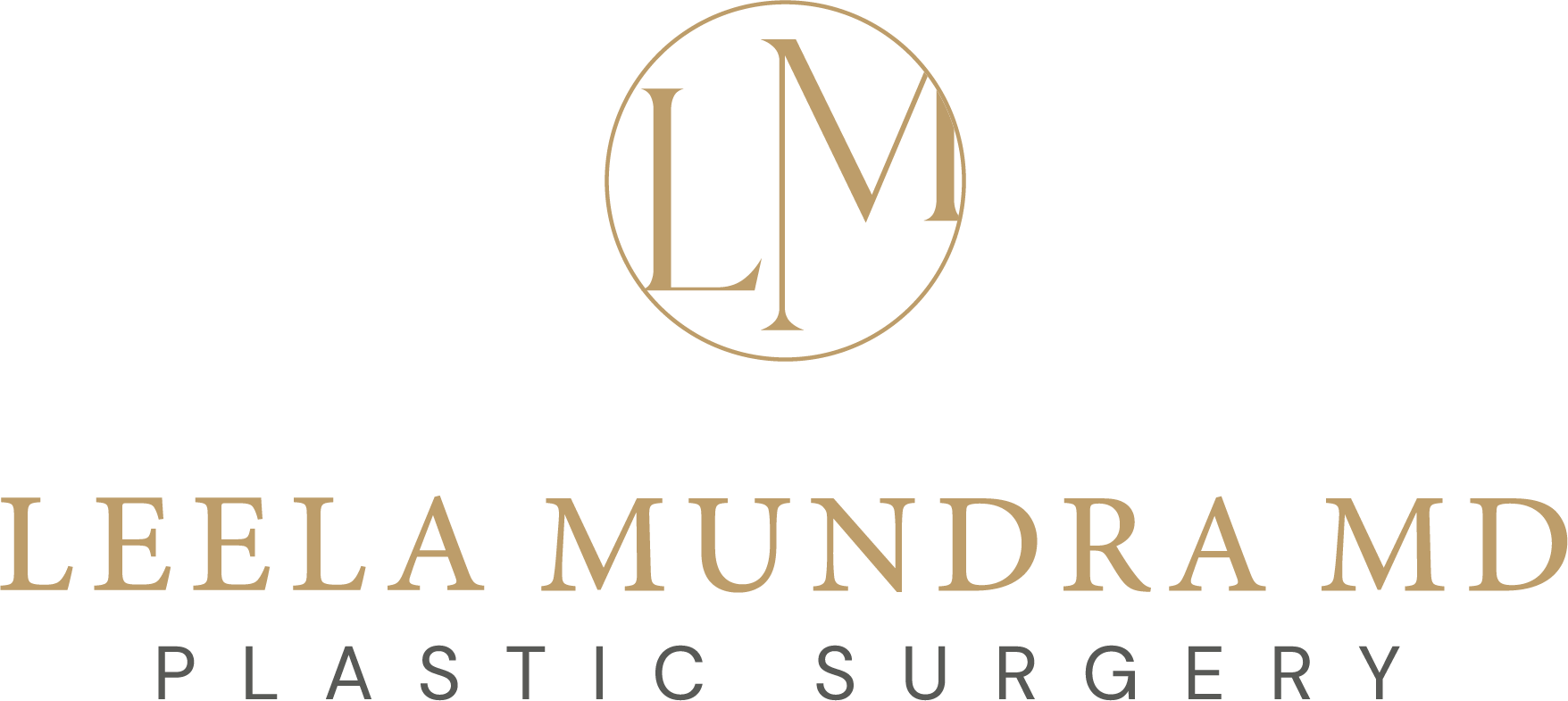Breast Reconstruction After Cancer
Breast cancer changes many things — but it doesn’t have to take away your sense of wholeness. You don’t have to live with permanent loss or feel disconnected from the body you once knew. Breast reconstruction offers a path to healing that goes beyond survival — it’s an empowering step toward reclaiming your form, rebuilding confidence, and feeling like yourself again.
I’m Dr. Leela, and I approach breast reconstruction with deep compassion and respect for your journey. Whether you’re preparing for a mastectomy or navigating life after treatment, I’ll be here to guide you through your options, answer your questions with care, and create a surgical plan that honors your goals and your timeline. My role is to help you restore not just your shape, but your sense of self — so you can move forward feeling whole, supported, and strong.

Who Is a Candidate for Breast Reconstruction?
You may be a candidate for breast reconstruction if you:
- Are planning for a mastectomy or lumpectomy as part of breast cancer treatment
- Have already undergone a mastectomy and want to restore breast symmetry or shape
- Are interested in breast reconstruction at a future date, after your cancer treatment is complete
- Are in good overall health and cleared for surgery by your oncology team
Reconstruction can be performed immediately after mastectomy (immediate reconstruction) or at a later time (delayed reconstruction). We’ll work closely with your care team to coordinate timing and ensure the safest, most supportive experience possible.
Benefits of Breast Reconstruction
Breast reconstruction offers both emotional and physical benefits, including:
- Restoring the natural shape and volume of the breast(s)
- Rebuilding symmetry and balance between the breasts
- Supporting body image and emotional recovery after cancer
- Minimizing the visual impact of mastectomy or lumpectomy
- Offering closure and a sense of renewed wholeness
Whether you choose to pursue reconstruction right away or years after your cancer treatment, this procedure can be a powerful step toward healing — one that honors what you’ve been through and how you want to move forward. For many, it can help you reclaim your identity and restore confidence in your reflection.
About the Procedure
Breast reconstruction is a highly individualized procedure that can be performed in several different ways, depending on your goals, body type, and medical history. The most common approach is implant-based reconstruction, which uses an implant to replace the removed breast tissue. A tissue expander may be inserted either at the time of mastectomy or later (delayed reconstruction) to gradually create space for a breast implant beneath the skin and muscle. Another option is flap-based reconstruction, which uses your own tissue from another area of the body. Nipple reconstruction and fat grafting can also be used to create a result that feels as natural and complete as possible.
No matter where you are in your breast cancer journey, I’ll help you navigate the options and timing that make the most sense for your body, your healing, and your peace of mind.

Surgical Techniques
Breast reconstruction techniques are selected based on your cancer treatment plan, anatomy, and preferences. Techniques include:
- Implant-based Reconstruction: Often used when skin must be gradually stretched after mastectomy. A temporary tissue expander may be placed first, followed by a permanent implant (inserted at a later date).
- Tissue Flap Reconstruction: Uses skin and fat tissue from either the lower abdomen (DIEP Flap) or the upper back (latissimus dorsi flap), often combined with an implant, to rebuild the breast mound.
- Fat Grafting: May be used to refine shape, symmetry, and softness in either type of reconstruction.
Breast reconstruction may be immediate (performed during mastectomy) or delayed (performed weeks, months, or even years later). Each approach has its own considerations, recovery timeline, and benefits. During your consultation, I’ll help you weigh the benefits of each and guide you toward a surgical plan that aligns with your health, healing, and long-term goals.
Recovery and Healing
Recovery after breast reconstruction depends on several factors, including the type of reconstruction, whether surgery is performed immediately or delayed after mastectomy, and your overall treatment plan. Patients who undergo implant-based reconstruction typically go home the same day or after one night in the hospital. For flap-based procedures, the procedure and recovery are a bit more in depth, and a hospital stay of 1 to 2 nights is often required to monitor healing.
In all cases, you can expect some soreness, bruising, swelling, and fatigue in the early days following surgery. Temporary changes in sensation are also common. All of these side effects will gradually improve over time. A surgical bra or compression garment may be worn to minimize swelling and provide support during the initial healing phase. I’ll also prescribe medications to help you stay comfortable and support your healing. Most patients are able to return to light daily activities within 2 to 3 weeks. You’ll need to avoid lifting, strenuous movement, and upper body exercises for about 4 to 6 weeks.
Healing from breast reconstruction after cancer is both physical and emotional — and I’ll be with you every step of the way. I’ll provide clear, personalized recovery instructions, check in with you regularly, and ensure you feel supported as you move forward in your healing journey.
Breast Reconstruction FAQs
Schedule Your Consultation

